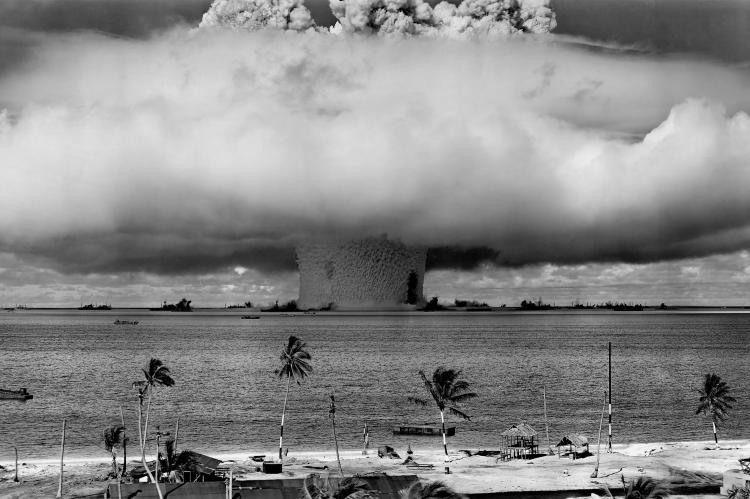Marine life thriving on Bikini Atoll
Corals are adapting 70 years after nuclear tests.
Some 70 years after the United States dropped 23 nuclear bombs, Bikini Atoll is slowing blooming to life. Scientists from Stanford University have discovered an abundance of marine life thriving in the crater of Bikini Atoll, declared a nuclear wasteland after the bombings.
Steve Palumbi, a marine science professor at the university, said effects of radiation poisoning on ocean life have never been studied in-depth and initial research suggests it to be “remarkably resilient”.
While animals studied around the Chernobyl have shown deformities and mutations, initial research at Bikini suggests the marine life has fared significantly better. Palumbi’s team discovered a diverse ecosystem around the bomb crater, including car-sized corals, huge schools of fish including tuna, sharks and snapper and coconut crabs devouring radioactive coconuts on the shore.
According to Palumbi, Bikini’s crabs, fish and coral appear normal and healthy to the naked eye. Some of the coral has been around for decades, with evidence growth commenced a decade after the last bombs were dropped. “The lagoon is full of schools of fish all swirling around the living coral. In a strange way, they are protected by the history of this place, the fish populations are better than in some other places because they have been left alone, the sharks are more abundant and the coral are big. It is a remarkable environment, quite odd,” said Palumbi.
Exposure analysis
The team concentrated on coral and coconut crabs due to their longevity. The scientists can analyze the effects of radiation exposure on the animals’ DNA after building up in their systems for many years. Fish living in Bikini Atoll today are only subject to low-level radiation exposure as they frequently swim in and out of the atoll. As fish have relatively short life-spans, it is possible the worst-affected fish died off decades ago.
“This is the most destructive thing we have ever done to the ocean, dropping 23 atomic bombs on it, yet the ocean is really striving to come back to life,” said Palumbi. “The fact there is life there and the life there is trying to come back from the most violent thing we’ve ever done to it is pretty hopeful,” he added.
Although plant, animal and ocean life appears to be recovering, humans are still unable to live and work on the atoll. A 2012 United Nations report cited “near-irreversible environmental contamination”, with water and seafood inconsumable and cultivation impossible due to soil contamination. More than half of the 167 original inhabitants of Bikini Atoll have now died, with many going to their graves still longing to return. ■


